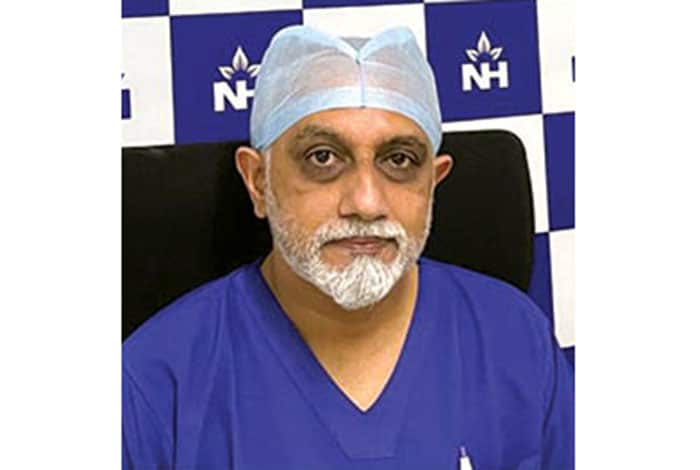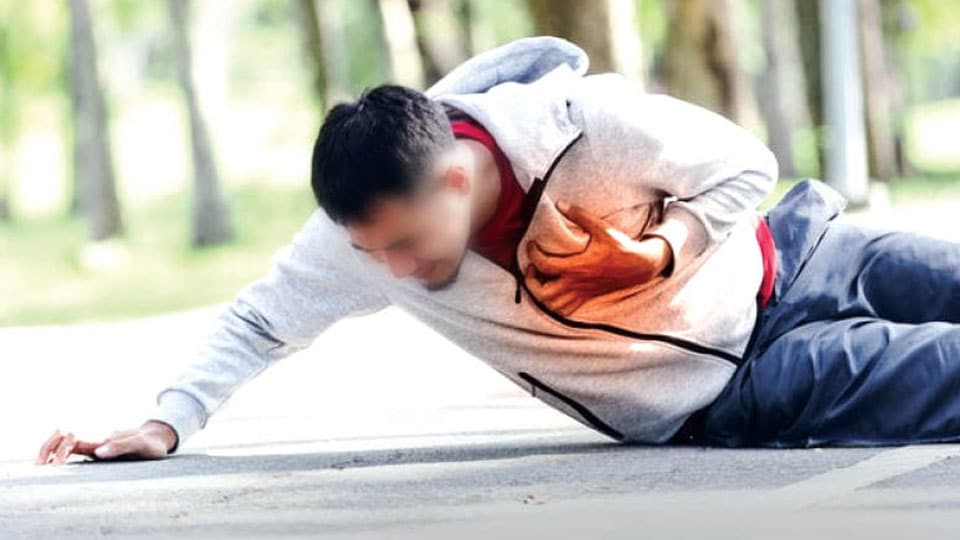By Dr. M.N. Ravi, Senior Heart Specialist and Clinical Director, Narayana Multispeciality Hospital, Mysuru
Regular gym goers and trained athletes are generally healthier than less active people and therefore less likely to have exercise-related cardiac arrest. Puneeth Rajkumar’s death led to extreme emotional reactions and almost cast a negative light on exercise activity in general. Actually the incidence of exercise-related sudden cardiac death is low and the benefits of regular exercise on both physical health and psychological well-being far outweigh the risks.
Exercise Physiology
Exercise increases the cardiac output and blood pressure. To meet the demands of skeletal muscle (most muscles of arms, legs, back) blood pumped from the heart should increase and blood flow from inactive organs should get redistributed to active skeletal muscles. While at rest, muscles receive about 20% of the total blood flow, during exercise the blood flow to the muscles increases to more than 80%. Generally, longer the duration of exercise, greater the burden on the heart.
For example, a full marathon is more stressful than a 100 metre dash. The lungs are also under stress during exercise as oxygen consumption and carbon dioxide production are increased. Oxygen consumption increases exponentially during first few minutes of exercise and maximal oxygen uptake is dependent on an individual’s gender, height, weight, lung function, fitness level and type of activity. Trained athletes can have higher oxygen uptake and consumption because of increased cardiac output and better heart function.
Temperature Regulation
The heat produced by the increased metabolism during exercise must be lost to prevent dangerous increase in core temperature. This is achieved by dilation of blood vessels of the skin. When warm blood passes close to the body surface, heat is lost through radiation and conduction. Evaporation of sweat causes fluid and electrolyte loss. Dehydration may lead to impaired cognitive and exercise performance.
Neurological adaptations (control fatigue for example) and hormonal changes also influence exercise capacity. For example, growth hormone increases regulate blood glucose levels.

Exercise-related death
The problem: Exercise-related sudden cardiac death is defined as death happening during or within one hour of physical activity. Age, gender, duration and intensity of physical activity, family history and, of course, underlying medical conditions are important factors that determine negative events during exercise.
Serious events including sudden cardiac arrest occurring after sports or exercise is about 5 percent. The majority of sports-related sudden cardiac deaths have happened in men. Possible explanations include lower rates of participation of women in endurance sports like marathons, women develop artherosclerotic plaques about 8 to 10 years later than men (this difference in age is narrowing), gender differences in plaque morphology, ventricular activity and autonomic factors.
Why sudden cardiac death in the young?
Coronary artery disease is the most common cause — 80 – 85%. Other causes include hypertrophic cardiomyopathy, dilated cardiomyopathy, myocarditis, arrhythmogenic dysplasias, valvular heart disease and physical blow to the chest. In the Framingham Heart study, the incidence of a myocardial infarction over a 10-year follow up was 12.9/ 1,000 in men aged 30 – 34 years and 5.2/ 1,000 in women aged 35 – 44 years. Family history of early heart disease and heart attacks are significant — not just first degree relatives, even second degree relatives. Heart attacks in the young covers inherited genetics, as well as environmental risk factors — diet, lifestyle, smoking.
Inter Heart study indicated that parental history of coronary artery disease was a risk factor independent of environmental, cultural, behavioural and genetic conditions. Also the age of onset of disease in parents and whether parents are affected are valuable information.
“Widow maker” artery – block in the important left anterior descending artery of the heart is important since it could be fatal in young men.
Exercises that boost heart health
Aerobic exercises improve circulation, thereby reduce blood pressure and heart rate. They increase aerobic fitness, reduce the risk of diabetes. About 30 minutes per day and 5 days a week is good and examples are brisk walk, running, swimming, cycling, tennis.
Resistance training has a specific effect on body composition, for example body fat (belly fat). Resistance training reduces fat, results in leaner muscle mass. Free weights workout, hand weights, dumbbells, push-ups, squats are some types of resistance training.
Message
Athletes, persons even in their 30s and 40s wanting to do moderate to heavy exercises, need to know their risk factors for developing cardiovascular disease and have those addressed. Simple blood check and if need be a basic cardiac check, including ECG and echo would be enough to detect hypertension, diabetes, cholesterol levels and heart ailments needing attention. Regular aerobic exercises will reduce risk of coronary artery disease.
The least fit men and women have increased risk of death from cardiovascular disease. Given the extensive cardiovascular benefits of exercise, a minimum of 30 minutes of moderate intensity physical activity (continuous or 10 minute increments) on most days of the week is recommended. This equals roughly 1.5 miles/day brisk walk.
Conclusion
No doubt, habitual exercise is a “pill” to be taken daily for a healthy life. Improved survival in exercise-related sudden cardiac arrest — the single most important factor is the time from collapse to defibrillation (achieve regular rhythm). Advanced life support in the field is the key. Automated External Defibrillators (AED) and bystander Cardiopulmonary Resuscitation (CPR) are the strongest independent predictors of survival. Installations of AEDs and CPR training programmes in exercise facilities/ gyms are recommended. Significant prevalence of symptomatic and established cardiovascular disease much before sudden cardiac death highlights a prevention gap which should be closed and therefore calls for targeted education and training to increase safety of exercise even in the young.








Recent Comments